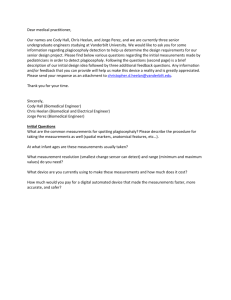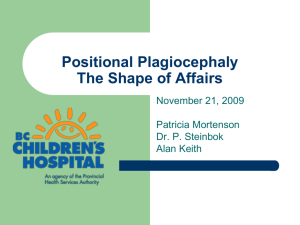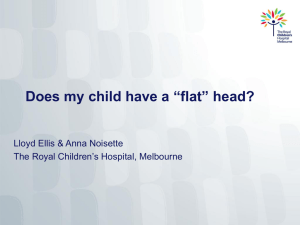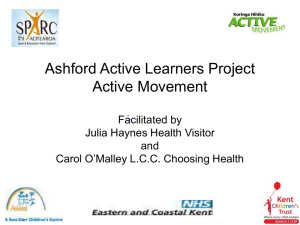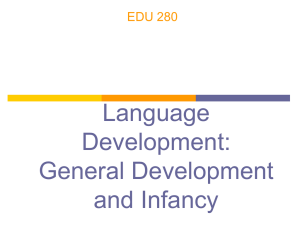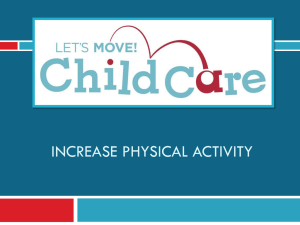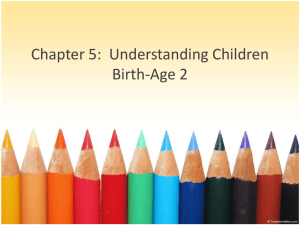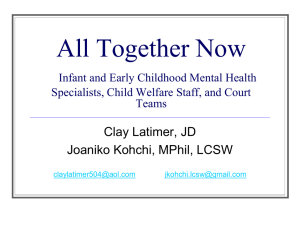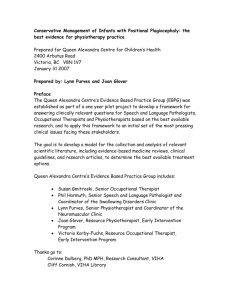Best Practice for Plagiocephaly
advertisement
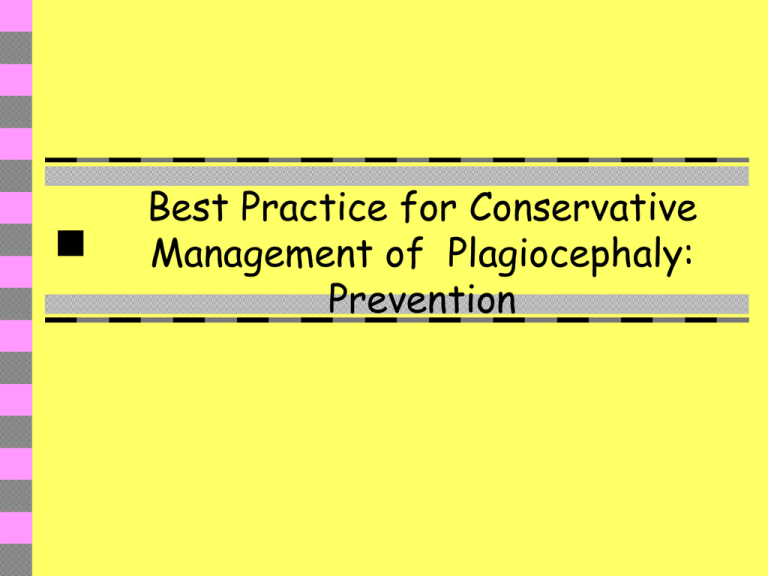
Best Practice for Conservative Management of Plagiocephaly: Prevention What is Plagiocephaly?? “skewed head” Mechanical factors alter head shape Post natal positioning of infant on same side of head Parallelogram Incidence: ‘Back to Sleep” campaign: SIDS Incidence of SIDS reduced from 2.6/1000 in 1986 to 1/1000 in 1998 Incidence of plagiocephaly has increased from 1/300 to 1/60 between 1974 and 1996 Huge increase in referrals to physiotherapy Objectives: To review the evidence for the best practice in the conservative management of infants with Plagiocephaly To develop guidelines for physiotherapy management of infants who are seen through the EIP Program Ensure knowledge transfer occurs to clinicians at QACCH Literature Review: 1 Systematic Review: Bialocerowski et al reviewed all research reports related to conservative management between Jan 1983 and December 2003. Two studies subsequent to Bialocerowski were also evaluated Of 18 studies reviewed, none were RCT’s. ie Level I evidence All were case series or comparison studies, not randomly assigned, ie. Level III or IV. Considerable biases were present within each study. Centre protocols, based on expert opinion of best practice, influenced many study designs Treatment of existing positional plagiocephaly Counterpositioning is recommended for babies up to about 6 months of age when supervised If your baby has a flat spot, turn your baby slightly off his or her back at about a 45 degree angle. This will take the pressure off the flat spot. Use a crib roll to prevent your baby from rolling onto the tummy. Neck mobility activities Studies have found that up to 12% of infants with PP may have congenital muscular torticollis Another 64% may have sternocleidomastoid imbalance These muscular asymmetries perpetuate the positional preference of the infant. Early physiotherapy to restore active and passive cervical mobility is recommended if any muscle imbalance is found in PP Repositioning Caregivers instructed in: Do not allow infant to sleep on flat spot Position interest on non flattened side Adjust carry, hold, feeding positions Active head turning incorporated in play Adjust/ minimize time in baby seats/car seats Early supervised tummy time Helmet Therapy In infants with moderate to severe plagiocephaly, parents will be given information that helmetting may be beneficial Comments re helmetting: Expense (up to $2000) and travel Hot, sweaty, skin injury Brachycephalic children hard to fit Lack of infant acceptance, more so in older infants Parent embarrassment Determinants: Predominantly male: 60-70% Predominantly right-sided Caucasian Increased incidence associated with: multi-parity Prematurity Breech delivery Determinants: Higher prevalence of PP found in children that: Sleep on their back Don’t have head position varied Spend less than 5 minutes/day in prone Are always bottle fed with same hand Associated Problems: There is some evidence of increased incidence of the following in infants with PP: Scoliosis, rib, hip, foot problems Visual disturbances (strabismus, astigmatism, field defects) Subtle developmental delay The cause/effect relationship of these is unclear. Prevention: Counseling of parents should include: Limit time infant is on back during the day Alternate head position Tummy time for more than 5 minutes per day while baby is awake,gradually increasing Minimizing time in car seats/seats Watch for positional preference Change orientation to activities Physiotherapists in the Early Intervention would like to ensure that the necessary information for prevention of plagiocephaly is available to families within VIHA by sharing it with our partners in pre, peri and post natal health
